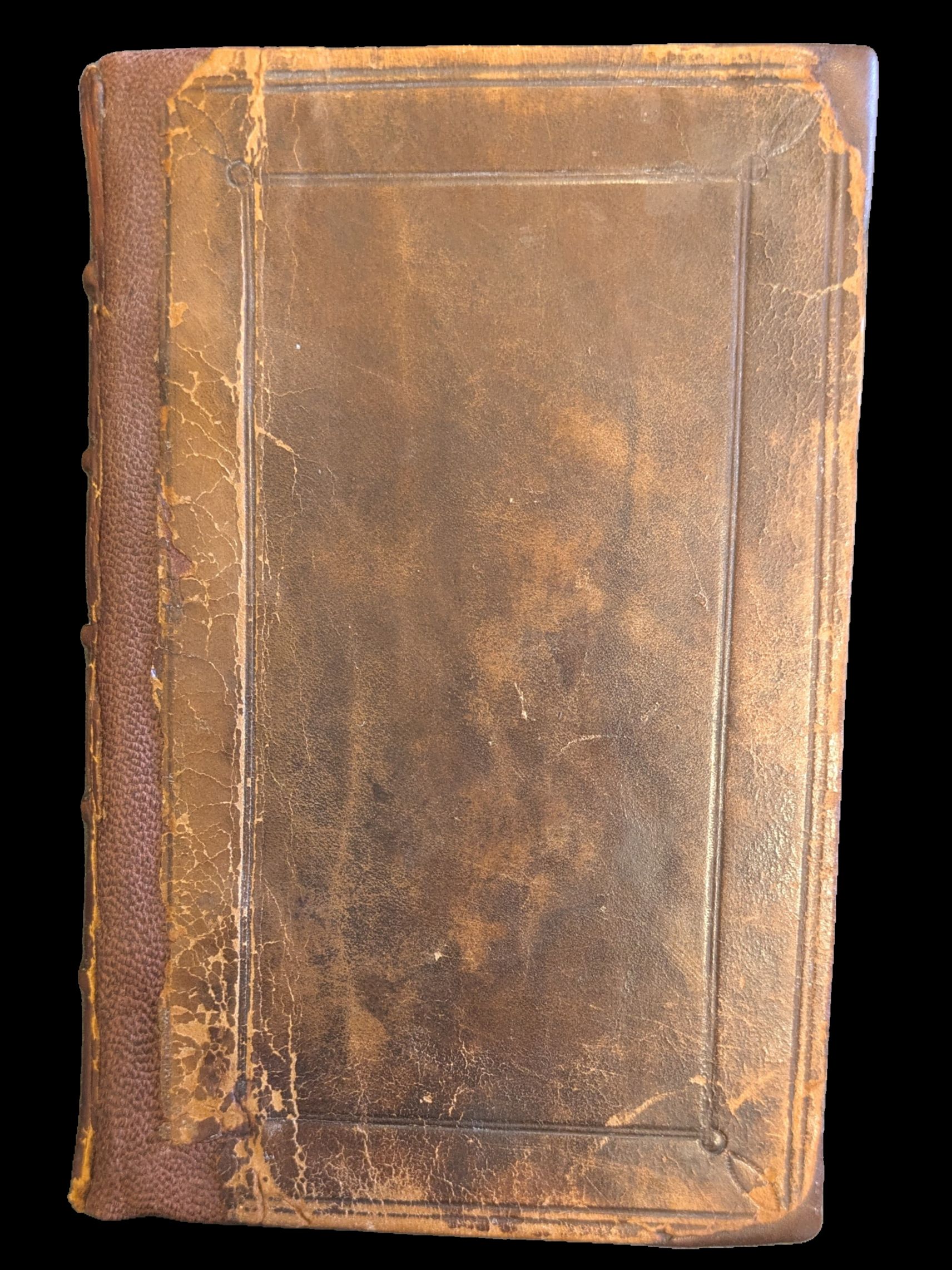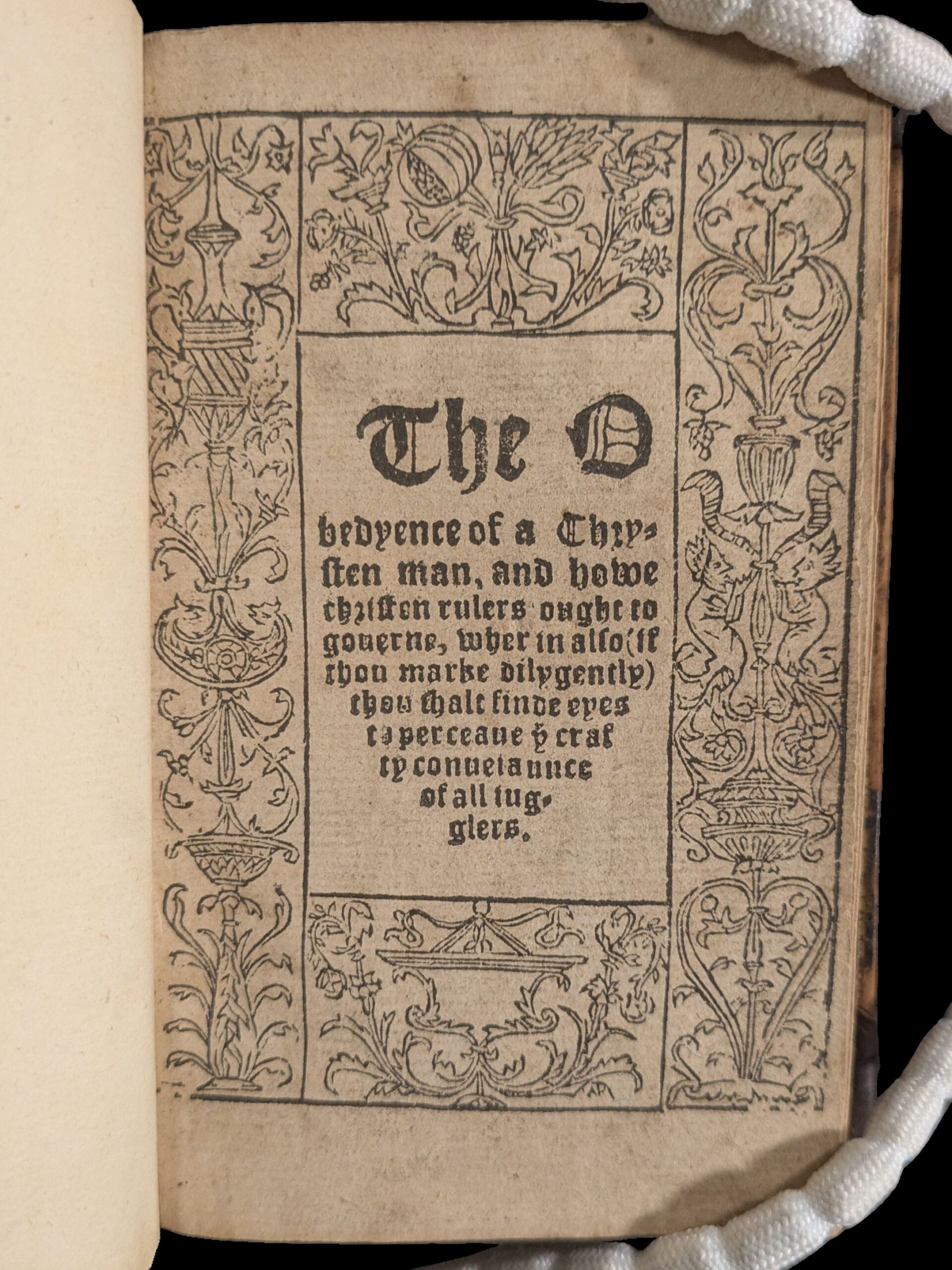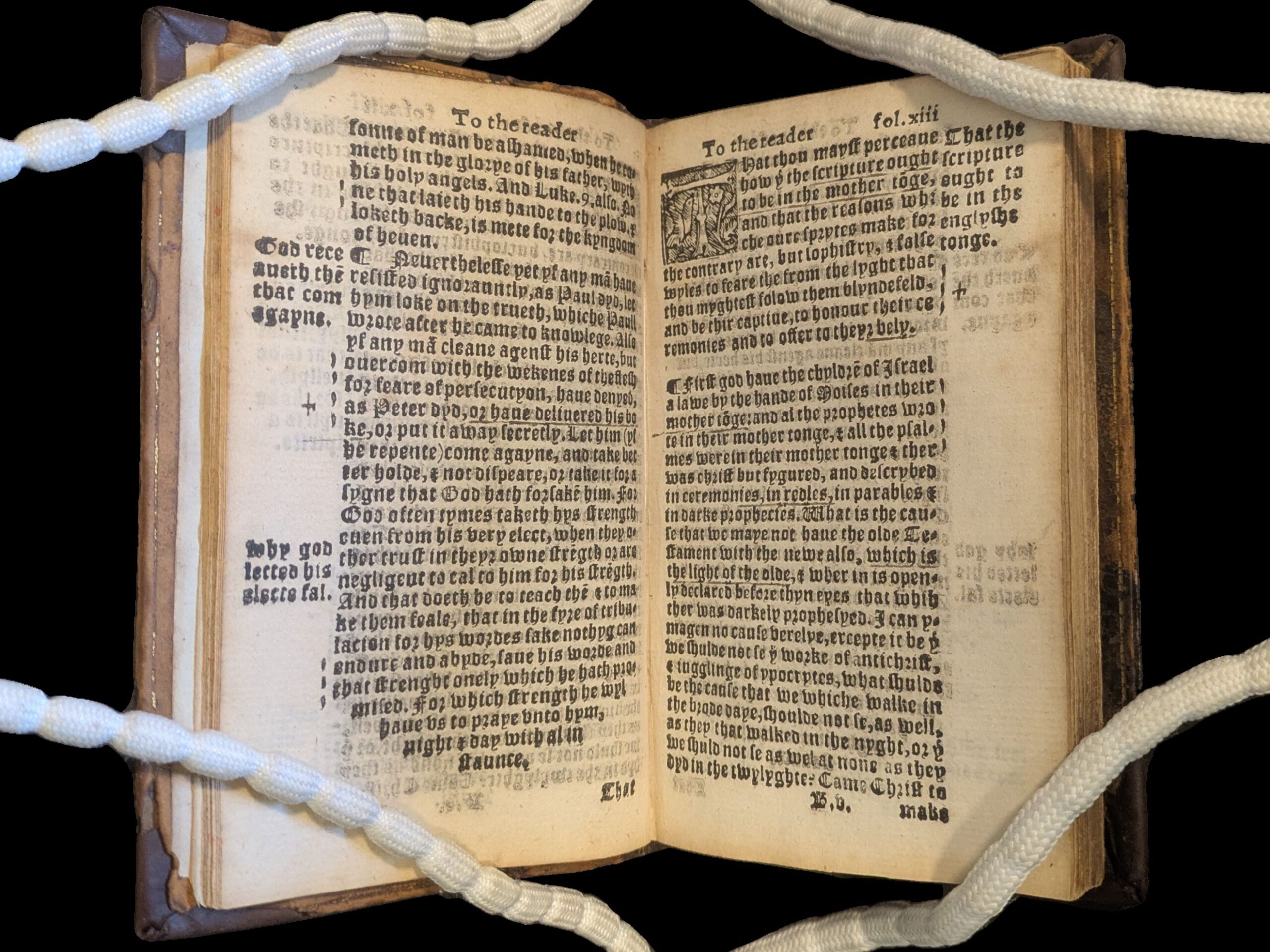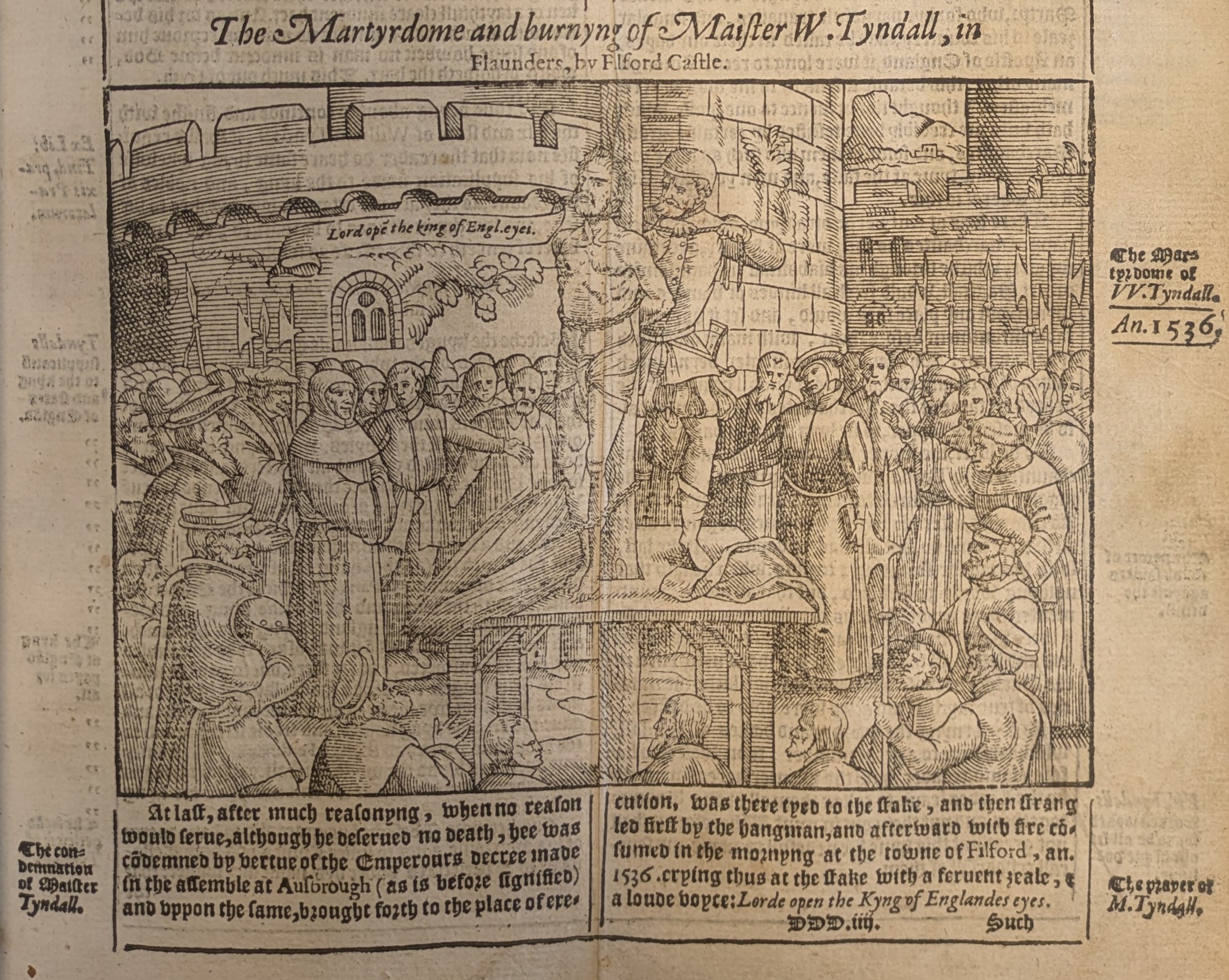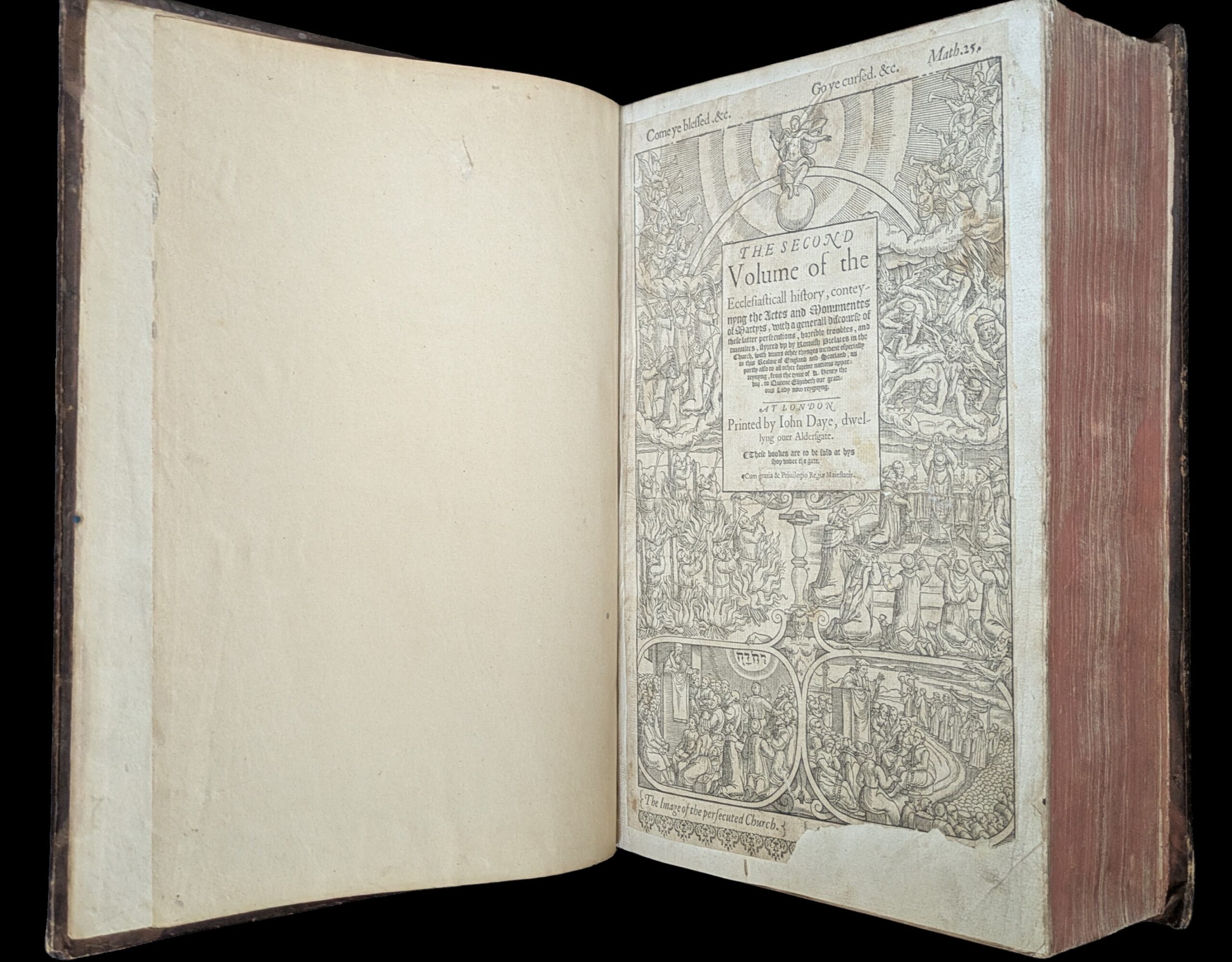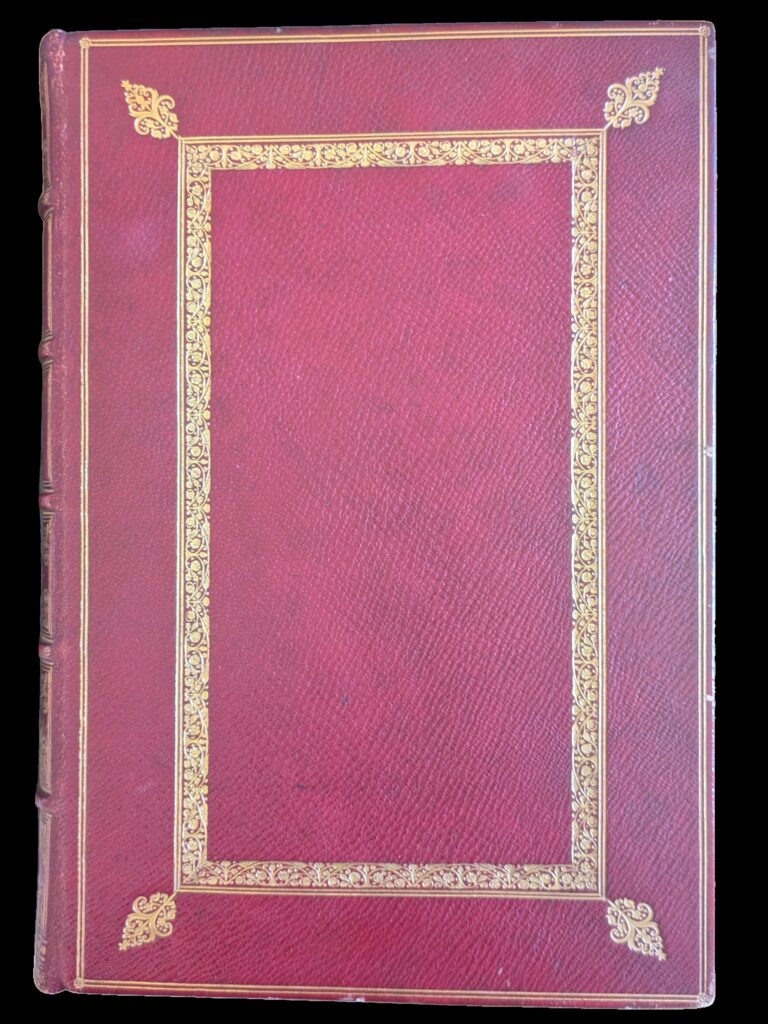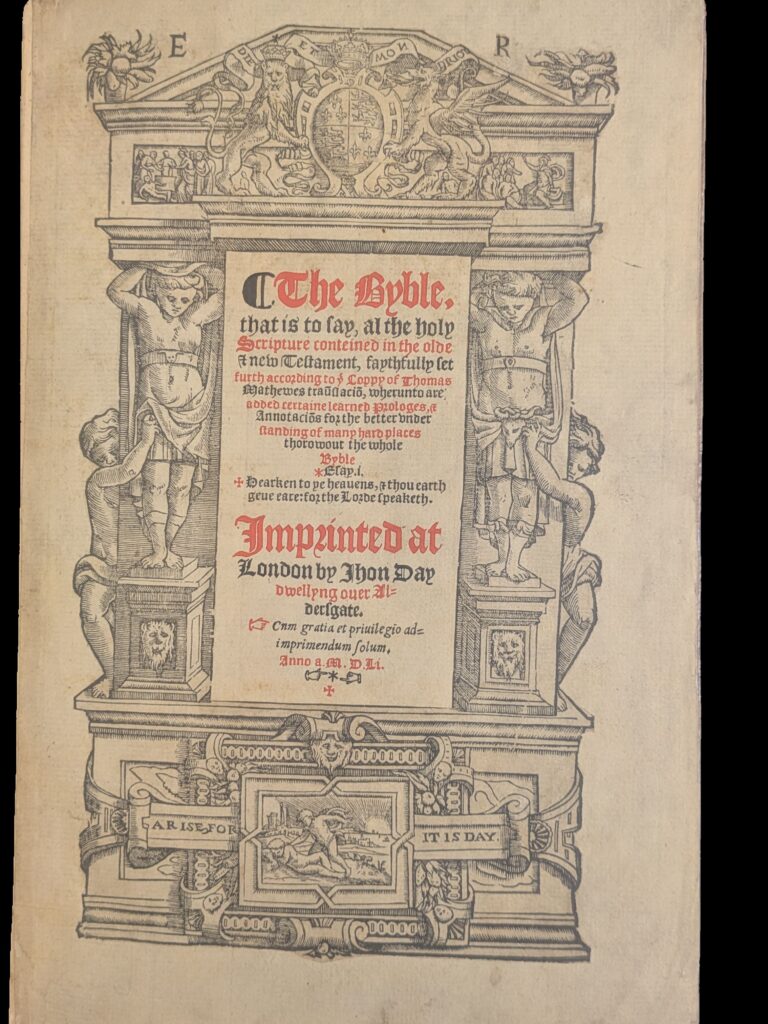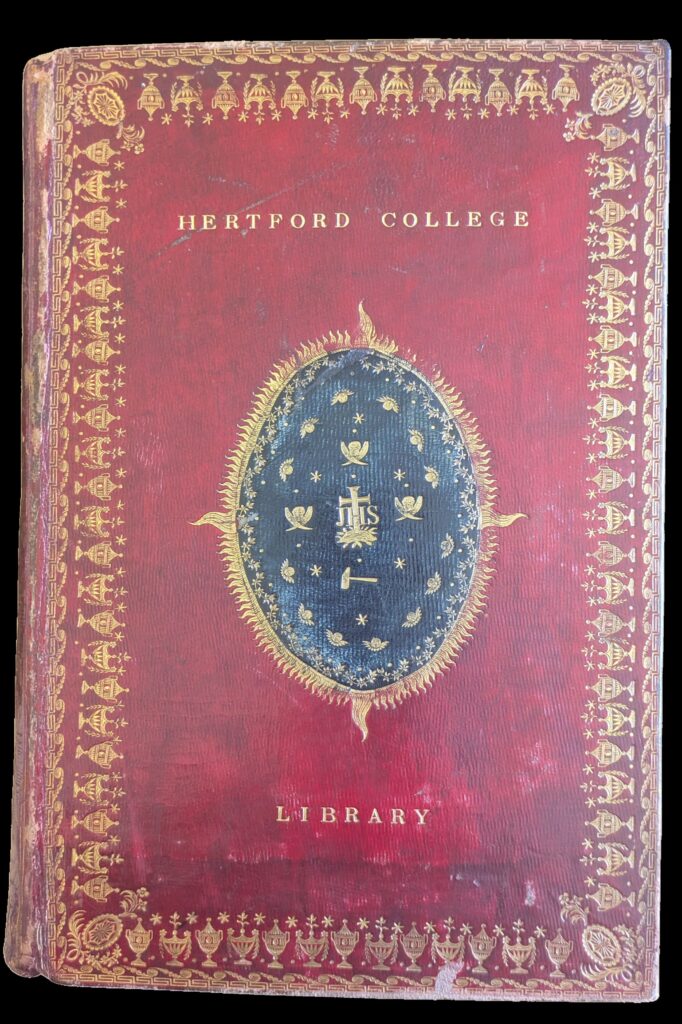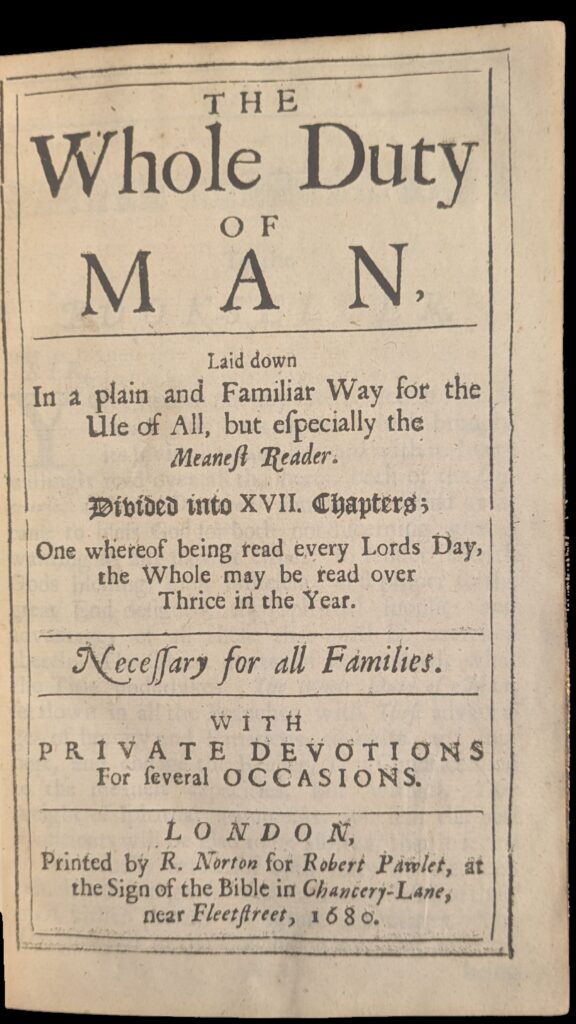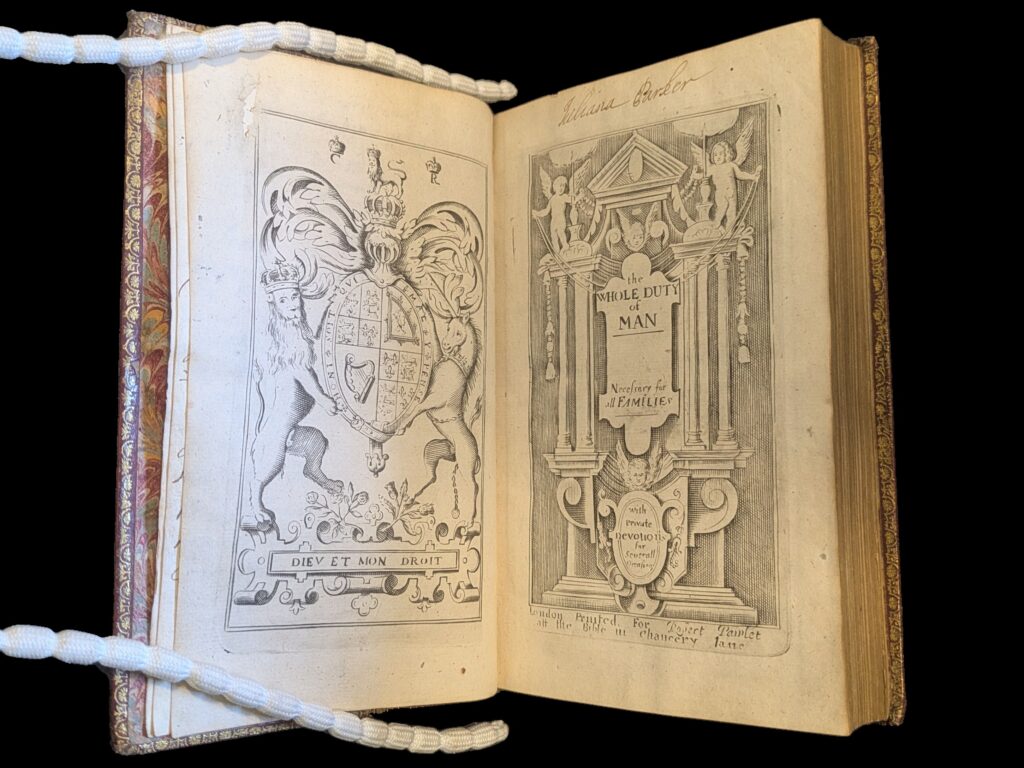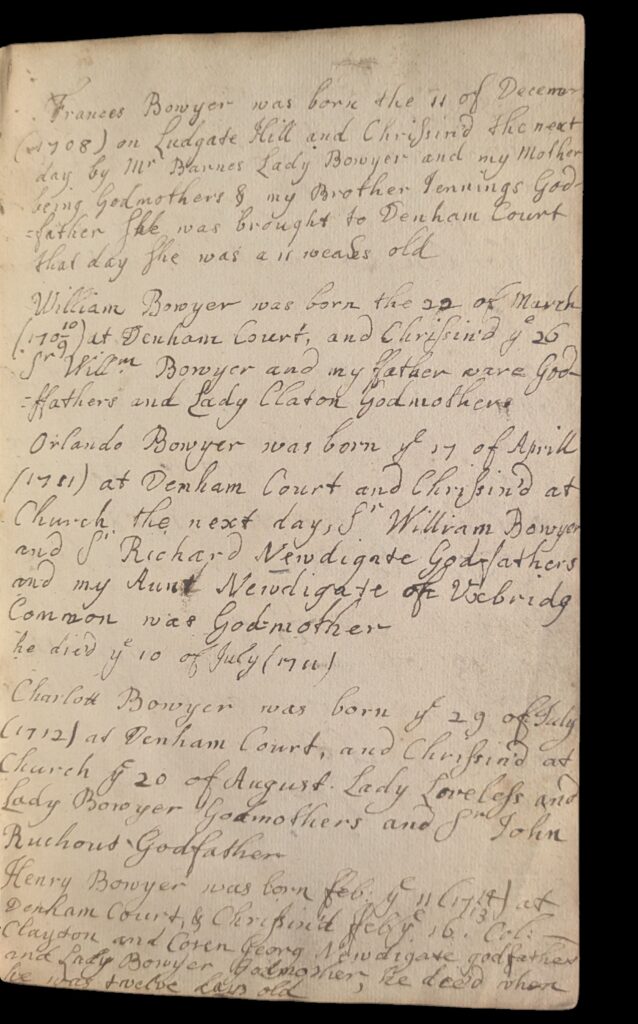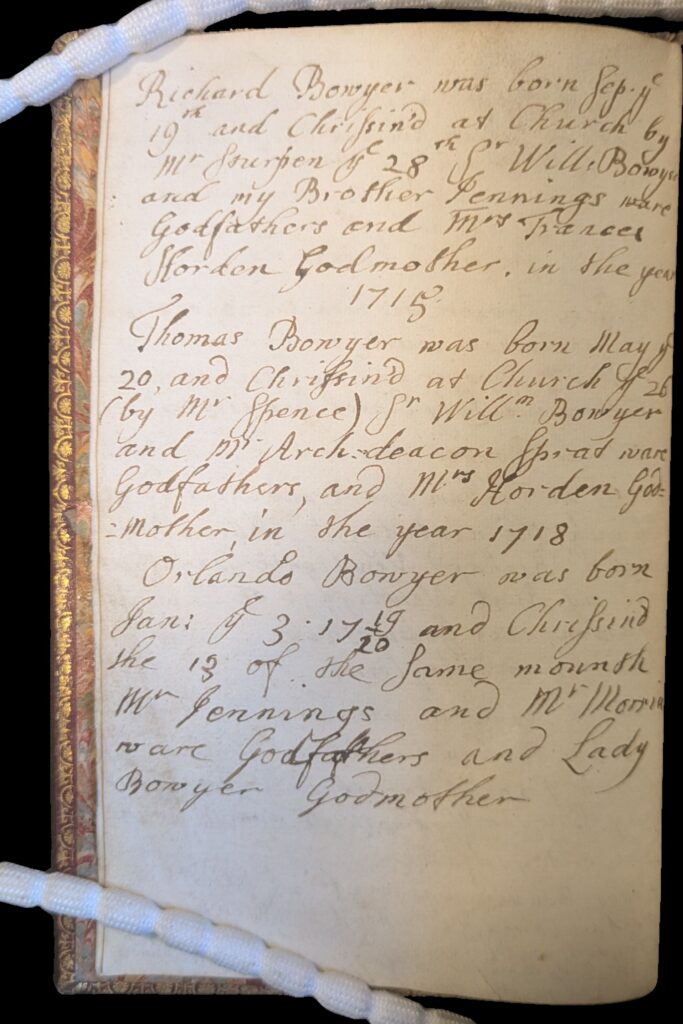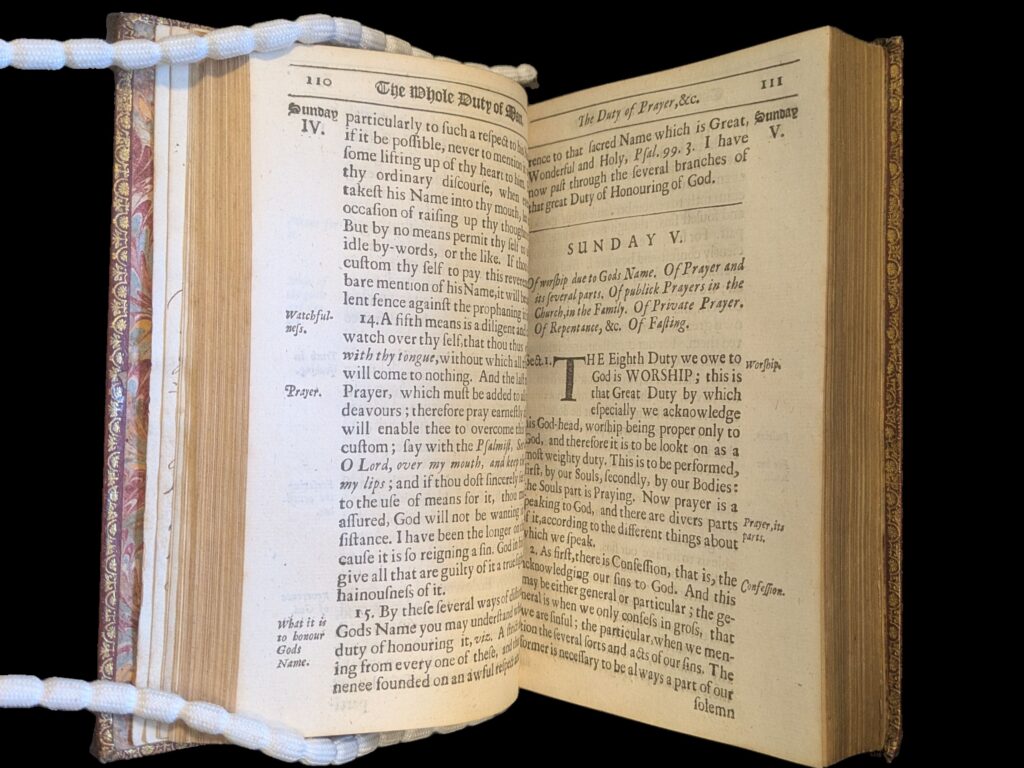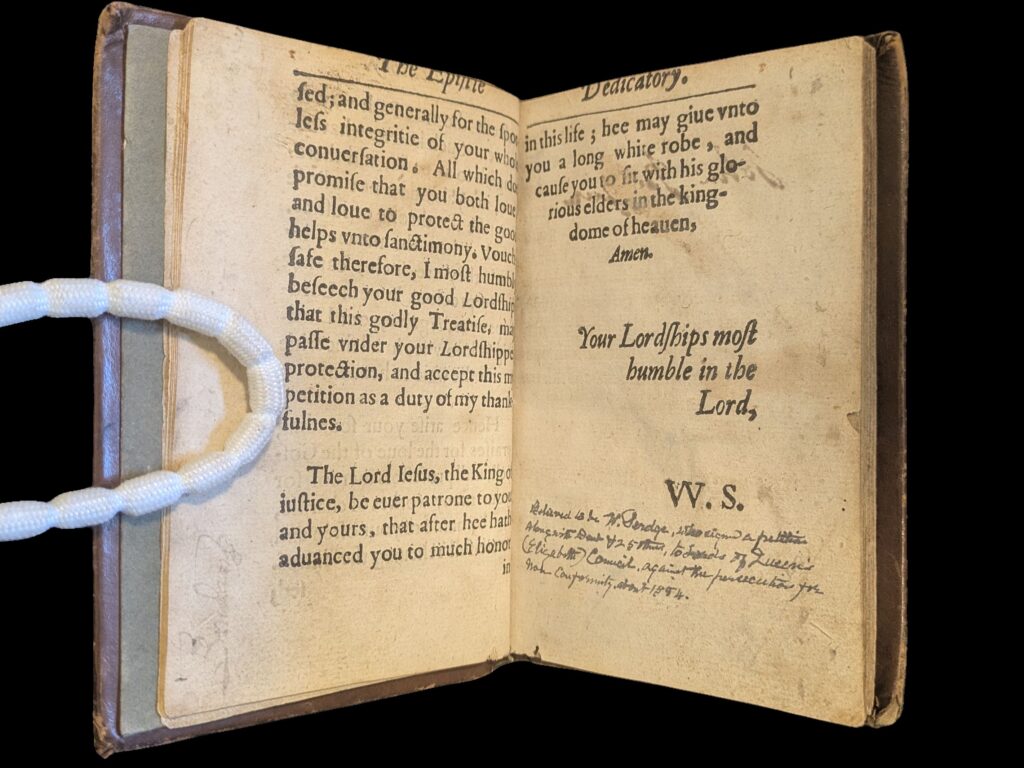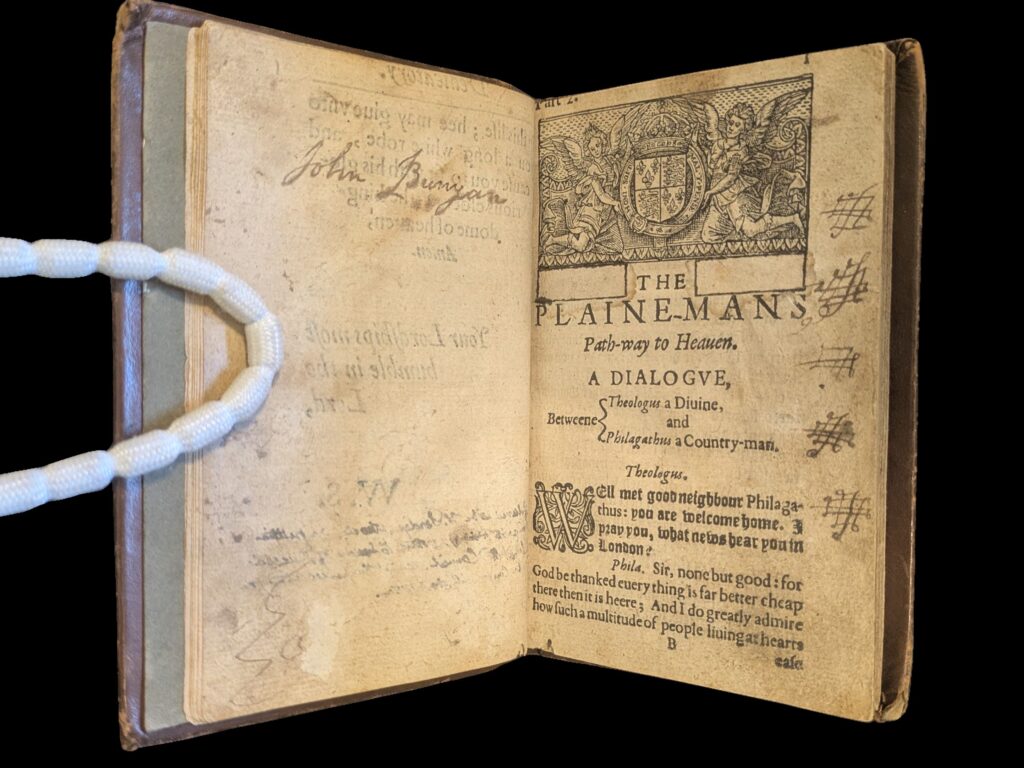2025 marks the 500th anniversary of translation of the New Testament by Hertford alumnus William Tyndale. Hertford MSt English (2025) student Kelli Skinner Eyerly curated a display of Hertford rare books to commemorate this important event. The display was held in person next to the Tyndale window in Hertford Chapel in May 2025 and is shared here in digital form.
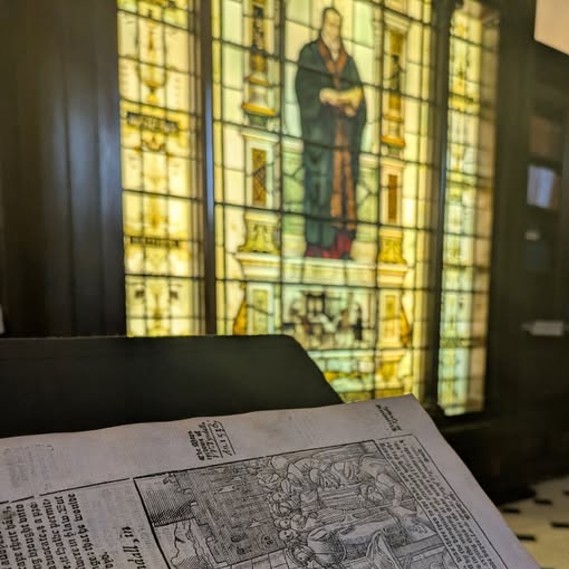
Tyndale and the Bible
William Tyndale (c.1494-1536) studied at Magdalen Hall, Hertford College’s predecessor, in the 1510s. Tyndale’s Bible was the first English translation based on Hebrew and Greek texts, rather than the Latin Vulgate. Initially working as a tutor, preacher and scholar in Gloucestershire and London, he moved to Europe in the 1520s to work on his biblical translations. He was arrested in Antwerp in 1535, found guilty of heresy, and executed near Brussels in 1536.

Tyndale’s Obedience
William Tyndale, The Obedyence of a Chrysten Man (London, 1561)
The Obedience is a seminal work by Tyndale, first published in 1528. Tyndale affirms the supremacy and authority of the Bible over that of the Catholic Church and advocates for access to the scriptures in the vernacular. The book supposedly influenced Henry VIII’s decision to declare the Act of Supremacy in 1534, making him the Supreme Head of the Church of England. Anne Boleyn owned a copy and encouraged the king to read it, leading him to exclaim ‘this book is for me and all kings to read’.
View All Souls’ College Library’s digitised full copy of the Obedience
View the catalogue records for Hertford and All Souls’ copies
Foxe’s Book of Martyrs
John Foxe, The Ecclesiasticall History Contaynyng the Actes and Monumentes of Thynges Passed in Euery Kynges Tyme in This Realme, vol 2. (London, 1570)
Foxe’s Book of Martyrs, also known as Acts and Monuments, was first published in 1563 and is a landmark work of Protestant history. It provides biographies of Christian martyrs from the first apostles to 16th century English Protestants, including William Tyndale. Foxe details Tyndale’s execution for heresy in 1536, noting Tyndale’s last words – ‘Lord! Open the King of England’s eyes’ – symbolizing his enduring hope for widespread access to scripture. This book was widely distributed in England, with copies placed in churches and includes vivid woodcut images for greater accessibility to illiterate audiences.
Visit the Foxe’s Acts and Monuments Online Project for free online early editions.
Hertford Bibles
The Byble,ed. by John Rogers and Edmund Becke and trans. by Richard Taverner and William Tyndale (London, 1551)
The Matthew Bible, edited by John Rogers, who used the pseudonym of Thomas Matthew, includes Tyndale’s New Testament and most of Tyndale’s Old Testament translations, which Rogers saved after Tyndale’s arrest. John Rogers was a friend of Tyndale and Miles Coverdale. Their friendship began in Antwerp, where Rogers was serving as a chaplain to English merchants, and was converted by Tyndale to the Protestant cause. Rogers became the first Protestant martyr burned at the stake during Queen Mary I’s reign in 1555. This was the first complete Bible containing all of Tyndale’s translations from the Hebrew and the Greek (and his prologues). Hertford’s copy had previous owners that added marginalia, including George De Horne in the early 18th century. An example in the images below shows De Horne adding notes next to one of Tyndale’s prologues, cross referencing Foxe’s Book of Martyrs.
View the catalogue record for Hertford’s copy
View a digitised copy of a similar 1551 edition from the Museum of the Bible
Book of Common Prayer, Bible and Books of Psalters c.1600-1615
This volume has several books bound in one, including a complete bible, a book of common prayer, and two psalters. This bible is open to a psalter ‘after the translation of the Great Bible.’ The Great Bible was the first authorized (by Henry VIII) English Bible. The translation for it was taken from the Matthew Bible, which is almost entirely comprised of Tyndale’s translation of the Bible. Much of the poetic language of so many English bibles was taken from Tyndale’s initial translation.
View the records for this volume in the library catalogue
Devotional literature in the century after Tyndale
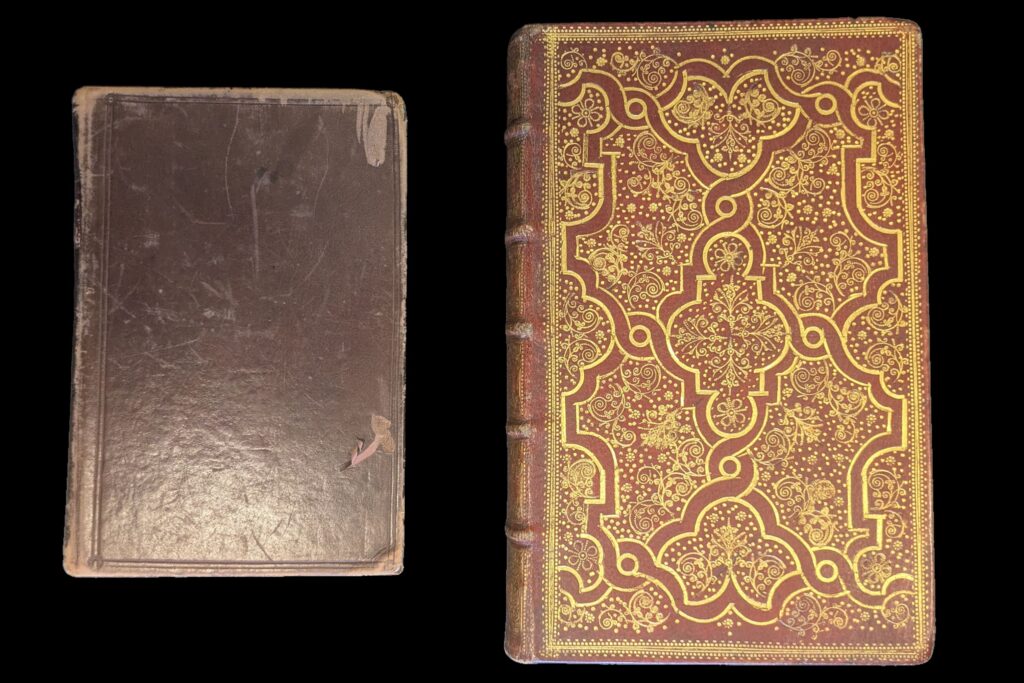
Richard Allestree, The Whole Duty of Man (London, 1680)
Tyndale’s work, and indeed all Protestantism, advocated the putting of the spiritual welfare of Christians into their own hands. In the decades after Tyndale’s Bible, Protestant devotional works aimed at guiding readers in their spiritual lives became popular. They give practical advice and simplify complex theological ideas. The Whole Duty of Man talks about one’s duty to God, to self, and to others.
Hertford’s copy includes a list of births in the Bowyer family from 1708 to 1720 in the front endpapers.
View the catalogue record for Hertford’s copy
Arthur Dent, The plaine-mans path-way to heauen (London, 1612)
The Plain Man’s Pathway to Heaven, also a guide on Christian daily living, is one of two books known to have been owned by John Bunyan, author of another significant devotional work: The Pilgrim’s Progress. Hertford’s recently acquired copy of Plain Man’s Pathway is signed by John Bunyan, but the provenance has not been authenticated.
View the records for this volume in the library catalogue
Links
Information about our Library renovation project
Rare Books and Archives at Hertford


